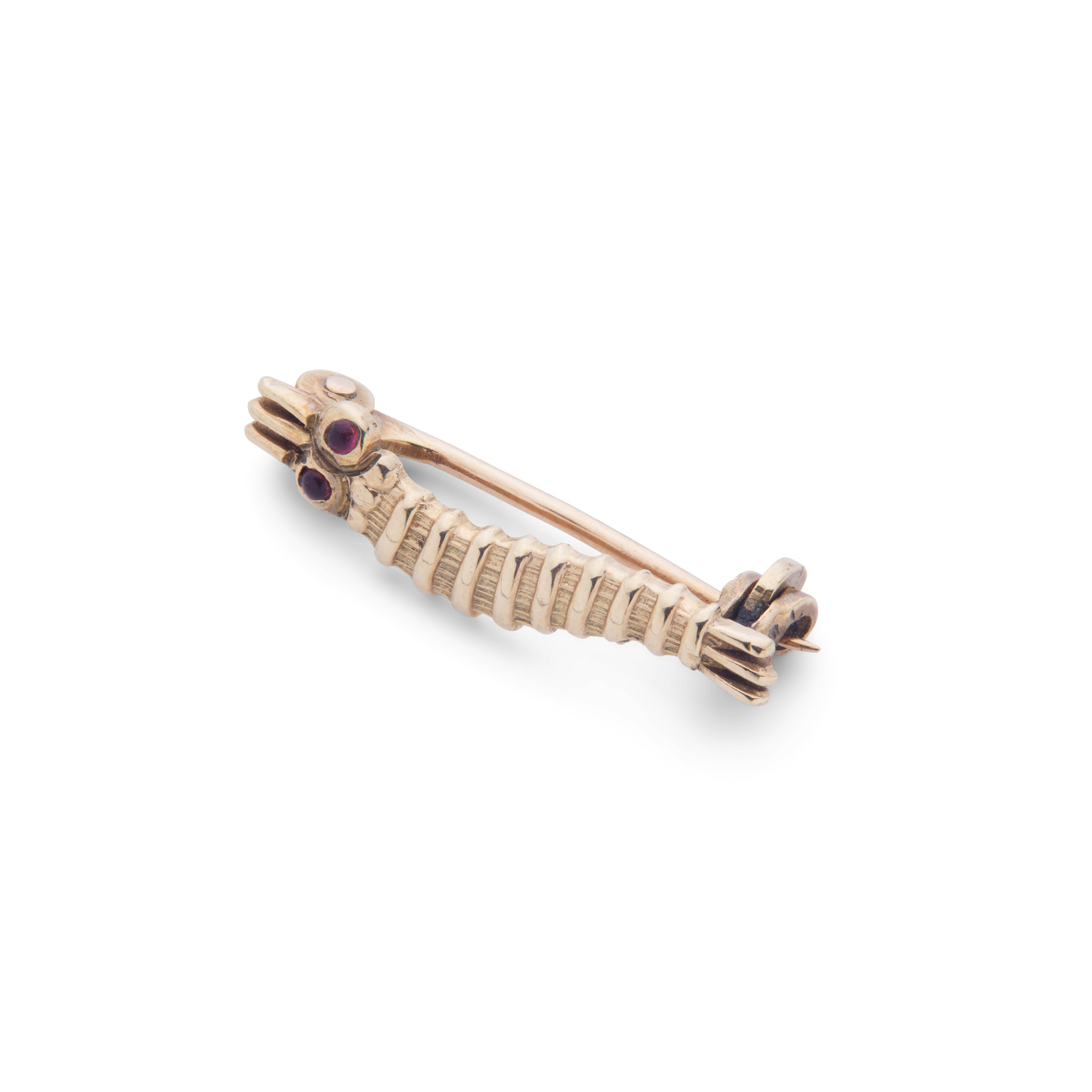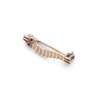
Lot 483

The Caterpillar Club: A caterpillar badge


Auction: Jewellery Day Two | Wed 3rd December 2025 | Lots 91 - 516
Description
Modelled as a caterpillar and set with cabochon garnet eyes, engraved to reverse Sgt J.T. Halliday, unmarked
Dimensions
Length: 1.9cm
Footnote
The Caterpillar Club was started in 1922.
Leslie Irvin, nicknamed ‘Sky-Hi Irvin’, was a former Hollywood stuntman and developer of the modern parachute who went on to establish the world’s first parachute manufacturing company in 1919: the Irving (or Irvin) Air Chute Company. By 1933, the company was manufacturing on an international level and by the start of the Second World War, forty-five countries were using Irvin’s silk parachutes.
It was in 1922 when Irvin first agreed that for every person who survived an airplane bailout using one of his company’s parachutes, he would present them with a gift thus marking the beginning of The Caterpillar Club. This gift took the form of a gold pin, shaped as a caterpillar and set with ruby eyes: the choice of the caterpillar stemming from the silkworm caterpillar which produced the silk originally used for the parachute material. The club also adopted a motto that read, “Life depends on a silken thread.”
Service members of both the US Air Force and the Royal Air Force were among the many who applied to and joined the club. While official U.S. Army regulations restricted the wearing of unapproved insignia, one station bulletin posted in 1944 out of the 96th Bombardment Group in Snetterton, England did include information on to how to apply for Caterpillar Club membership; interestingly, this followed a bulletin posted two weeks’ prior pointing out the unauthorized use of the caterpillar pins on air force members’ uniforms.
By the end of the Second World War, over 34,000 pins had been distributed to airmen and women who had submitted their survival stories to the club for membership approval. More than 13,000 R.A.F. officers and airmen sent in their applications from within prisoner-of-war camps. One airman from Bomber Command sent Leslie Irvin his thanks for an easy landing “on behalf of my future – as yet unknown – wife and children”, written on a P.O.W. postcard.
The Caterpillar Club continues today and includes such notable members as Charles Lindbergh, General Jimmy Doolittle as well as Senator and astronaut John Glenn. While official club membership numbers are only a fraction of the total number eligible, it is estimated that at least 100,000 people have had their lives saved by IRVIN parachutes.
Based on our research, lot 483, appears to be the caterpillar brooch awarded to Sergeant John Thomas Halliday who served in the RAFVR, or the Royal Air Force Volunteer Reserve; this was a civilian aircrew reserve formed in 1936 and were used extensively during the Second World War.
Sergeant Halliday’s admittance into the Caterpillar Club could stem from an incident that took place on the 12th into the 13th of July, 1944. At that time, Halliday was serving as a Flight Engineer in 103 Squadron of RAF Bomber Command, stationed at RAF Elsham Wolds in North Lincolnshire. Within the area, this was one of the first and most important RAF Stations during the Second World War.
On the 12th of July, Halliday was one of a seven-person crew carrying out their ninth operation: a night attack on the marshalling yards at Revigny in eastern France. Upon return from the operation within their Avro Lancaster III, the crew encountered rain and low cloud at their own air base and were diverted to RAF Carnaby, an emergency landing strip on the east coast of England that gave crippled bombers the chance for a safe landing. However, the Lancaster was also running low on fuel, and the crew were ordered to bale out. The aircraft was abandoned over Bridlington and subsequently crashed at Langtoft. Thankfully, all members of the crew were reported safe.
Later that year, after carrying out a successful attack on a V1 launching site at La Nieppe, the Lancaster PB363 which Sergeant Halliday was aboard, was shot down by flak and Halliday was captured as a prisoner of war along with other remaining survivors. He would be held at Stalag Luft L7 Bankau near Krueuzburg in Upper Silesia, Poland.

